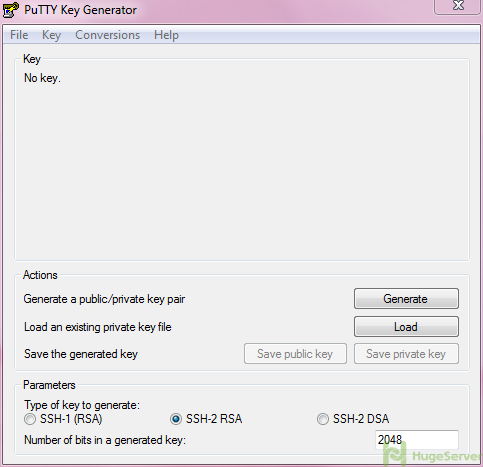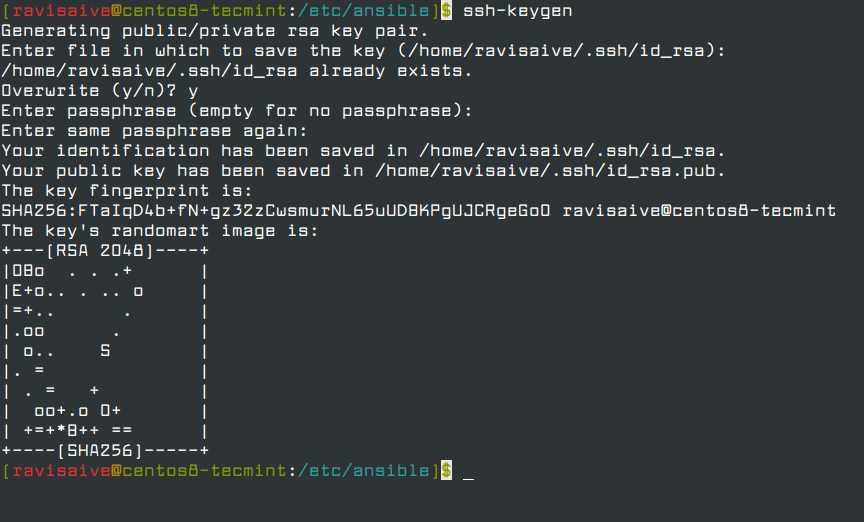Centos Generate Ssh Key For User
You can generate an SSH key pair directly in cPanel, or you can generate the keys yourself and just upload the public one in cPanel to use with your hosting account. When generating SSH keys yourself under Linux, you can use the ssh-keygen command. Use the ssh-keygen command to generate a public/private authentication key pair. Authentication keys allow a user to connect to a remote system without supplying a password. Keys must be generated for each user separately. If you generate key pairs as the root user, only the root can use the keys. To improve the system security even further, generate SSH key pairs and then enforce key-based authentication by disabling password authentication. To do so, open the /etc/ssh/sshdconfig configuration file in a text editor such as vi or nano, and change the. This is what you would need to enter into the control panel to use the SSH key. Windows 7 ultimate 64 bit activation key generator free download. Creating an SSH key on Linux. The tools to create and use SSH are standard, and should be present on most Linux distributions. With the following commands, you can generate ssh key. Run: ssh-keygen -t rsa. For a more secure 4096-bit key, run: ssh-keygen -t rsa -b 4096. Add a user without password but with SSH and public key. I want to add a user to Red Hat Linux that will not use a password for logging in, but instead use a public key for ssh. This would be on the command line. Useradd -password-disable and adduser -password disable.
- Centos Generate Ssh Key For User List
- Centos Ssh Key Setup
- Centos Generate Ssh Key For User Password
- Centos Generate Ssh Key For User Guide
An SSH Key allows you to log into your server without needing a password. SSH Keys can be automatically added to servers during the installation process.
Creating an SSH key on Windows
/windows-server-2008-enterprise-key-generator.html. The simplest way to create SSH key on Windows is to use PuTTYgen.
- Download and run PuTTYgen.
- Click the 'Generate' button.
- For additional security, you can enter a key passphrase. This will be required to use the SSH key, and will prevent someone with access to your key file from using the key.
- Once the key has been generated, click 'Save Private Key'. Make sure you save this somewhere safe, as it is not possible to recover this file if it gets lost
- Select all of the text in the 'Public key for pasting into OpenSSH
authorized_keysfile'. This is what you would need to enter into the control panel to use the SSH key.
Creating an SSH key on Linux
Centos Generate Ssh Key For User List
The tools to create and use SSH are standard, and should be present on most Linux distributions. With the following commands, you can generate ssh key.
- Run:
ssh-keygen -t rsa. For a more secure 4096-bit key, run:ssh-keygen -t rsa -b 4096 - Press enter when asked where you want to save the key (this will use the default location).
- Enter a passphrase for your key.
- Run
cat ~/.ssh/id_rsa.pub- this will give you the key in the proper format to paste into the control panel. - Make sure you backup the
~/.ssh/id_rsafile. This cannot be recovered if it is lost.

Adding an SSH key to your control panel
- Once you're logged in, go to https://my.vultr.com/sshkeys.
- Click 'Add SSH Key'.
- Enter a descriptive name for the key.
- Paste in your SSH public key. This is a long string beginning with 'ssh-rsa'. You should have saved this from when you generated your key.
- Click 'Add SSH Key'.
- Now, when you're deploying servers you will be able to select which SSH keys you want to add to the newly deployed server. Remember to select the keys before the initial server deployment, otherwise you will need to log into the newly created server and add the SSH keys manually.

Limitations
- SSH keys are only available for Linux and FreeBSD. They are not supported for Windows, custom ISOs, nor snapshot restores.
- SSH keys can only be managed from the control panel during deployment. You cannot use the control panel to manage them on an already-installed instance.
Connecting to a server using an SSH key from a Windows client
Centos Ssh Key Setup
- Download and run the PuTTY SSH client.
- Type the IP address or Username + IP address (
user@x.x.x.x) of the destination server under the 'Host Name' field on the 'Session' category. - Navigate to the 'Connection -> SSH -> Auth' category (left-hand side).
- Click 'Browse..' near 'Private key file for authentication'. Choose the private key file (ending in
.ppk) that you generated earlier with PuTTYgen. - Click 'Open' to initiate the connection.
- When finished, end your session by pressing
Ctrl+d.
Centos Generate Ssh Key For User Password
Connecting to a server using an SSH key from a Linux client
Centos Generate Ssh Key For User Guide
- Check that your Linux operating system has an SSH client installed (
which ssh). If a client is not installed, you will need to install one. - Initiate a connection:
ssh -i /path/to/id_rsa user@x.x.x.x - When finished, end your session by pressing
Ctrl+d.